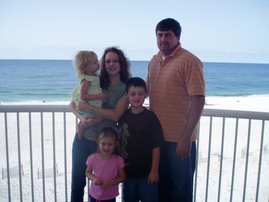
The Wolf: Night Howler by Christian Havard (48 pages; 1 book) #21
Havard, Christian (2006). The Wolf: Night Howler. Watertown, MA: Charlesbridge.
Awards: Eligible for Children’s Choice Award 2006, Outstanding Science Trade Book 2006
Havard, Christian (2006). The Wolf: Night Howler. Watertown, MA: Charlesbridge.
Awards: Eligible for Children’s Choice Award 2006, Outstanding Science Trade Book 2006
Grade Level: 4-6 grades
Author Credibility: I could not find any information on the Christian Havard or how he prepared for the book. However, the book was well written and went alone other books I have read about wolves in the past.
Summary/Response: Wolves live and hunt in groups known as packs. These packs are lead by the alpha male or female. Their sense of smell and hearing are their two greatest weapons. They can hear as far as ten miles away and smell prey as far as a mile away. Wolves are social animals that look out for the other members of the pack. These packs usually consist of about fifteen members. The pack hunts together and kills their prey by surrounding it and then pinning it to the ground. The mother wolf gives birth in the spring to litter of pups usually consisting of four to six. Wolves are a threatened species due to loss of habitat and illegal hunting. However, there are conservation efforts to help the wolf make a comeback. It is important for these animals to be protected, for centuries people have written stories and fairy tales that depict wolves attacking humans when in reality they very rarely attack at all. This book is a must for any non-fiction science collection.
National Standards: Language: Students read a wide range of print and nonprint texts to build an understanding of texts, of themselves, and of the cultures of the United States and the world; to acquire new information; to respond to the needs and demands of society and the workplace; and for personal fulfillment. Among these texts are fiction and nonfiction, classic and contemporary works.
Science: Structure and function in living systems, Reproduction and heredity, Regulation and behavior, Populations and ecosystems, Diversity and adaptations of organisms
Author Credibility: I could not find any information on the Christian Havard or how he prepared for the book. However, the book was well written and went alone other books I have read about wolves in the past.
Summary/Response: Wolves live and hunt in groups known as packs. These packs are lead by the alpha male or female. Their sense of smell and hearing are their two greatest weapons. They can hear as far as ten miles away and smell prey as far as a mile away. Wolves are social animals that look out for the other members of the pack. These packs usually consist of about fifteen members. The pack hunts together and kills their prey by surrounding it and then pinning it to the ground. The mother wolf gives birth in the spring to litter of pups usually consisting of four to six. Wolves are a threatened species due to loss of habitat and illegal hunting. However, there are conservation efforts to help the wolf make a comeback. It is important for these animals to be protected, for centuries people have written stories and fairy tales that depict wolves attacking humans when in reality they very rarely attack at all. This book is a must for any non-fiction science collection.
National Standards: Language: Students read a wide range of print and nonprint texts to build an understanding of texts, of themselves, and of the cultures of the United States and the world; to acquire new information; to respond to the needs and demands of society and the workplace; and for personal fulfillment. Among these texts are fiction and nonfiction, classic and contemporary works.
Science: Structure and function in living systems, Reproduction and heredity, Regulation and behavior, Populations and ecosystems, Diversity and adaptations of organisms
Illustrations: Colorful photo essay with brilliant photographs and sketches.
Access Features: Further reading on wolves, Websites, Index
Related Texts: Gray Wolves: Return to Yellowstone by Meish Goldish, The Secret Lives of Wolves by Julia Barnes
Classroom Use: I would use this for life science. It is good to discuss habitats and the importance of conservation of the wolves.

No comments:
Post a Comment